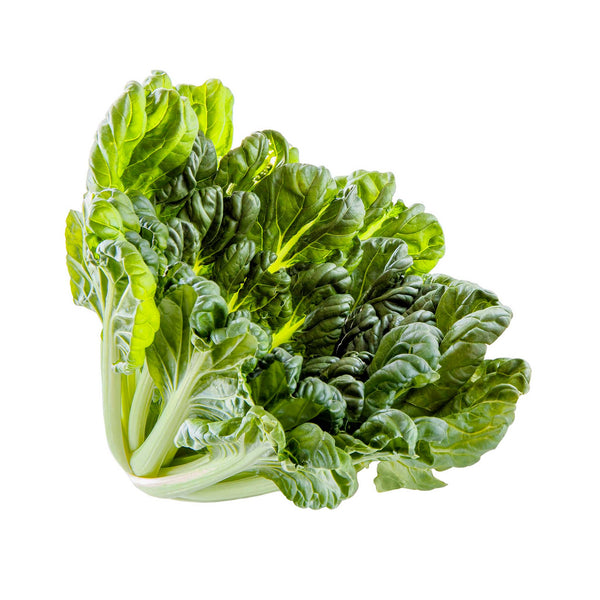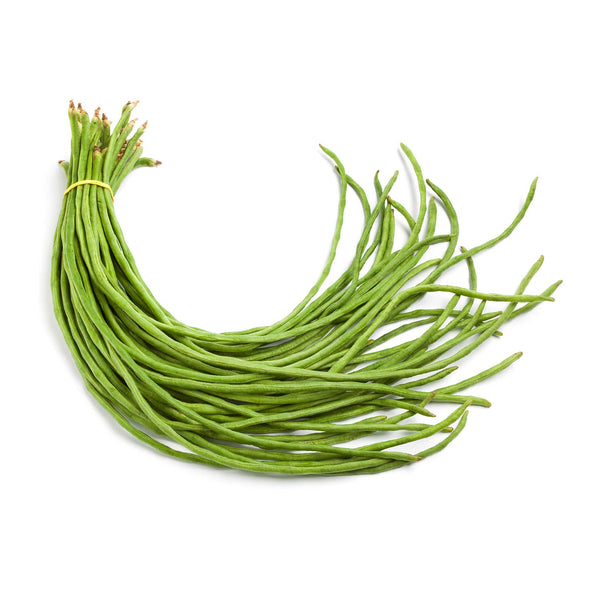Lettuce Grand Rapids Seeds
Rs. 80.00
Grand Rapids are lettuce variety. Each pack contain 100 seeds with 98 % Physical Purity.
LETTUCE ( Botanical name: Scientific name: Lactuta sativa)
Common names: Lettuce, Tshilai it belongs to Family: Astaraceae/Compositae
Description of the plant The plant is a lacti-ferous herb.
Stem: Lettuce has a shortened fleshy stem 10 to 15 cm tall. The stem elongates and branches in a paniculate manner during the reproductive phase. Each branch terminates in a homogamous capitula with ligulate, hermaphrodite pale yellow leaves.
Leaves: It produces a rosette of smooth, radical, spirally arranged leaves.
Cultivars: Lettuce is grouped into four classes, namely
-
Loose-leaf,
-
Cos or romaine,
-
Butter head &
-
Crisphead or head lettuce.
1. Loose-leaf lettuce
This group does not form heads and is characterized by soft leaves. It is represented
by cultivars such as Grand Rapids. It grows well both in the open field and under protection and can be shipped over longer distances.
2. Cos or romaine lettuce
The cos lettuce has a loose head with narrow, soft leaves. The outer leaves
are dark green, coarse and have heavy ribs while the inner foliage is lighter.
It is more resistant to cold than the other groups. This type is usually grown in
open fields.
3. Butter head lettuce
The butter head lettuce forms a head that is somehow similar to that of cabbage
in shape and has soft, waxy, flexible leaves. It is sensitive to hot weather.
Cultivars in this group include Kragramer Sommer and All Year Round.
Butter head lettuce is less adapted to field growing or long distance shipments.
4. Crisp head or Iceberg lettuce:
This type is widely grown in the country and it is characterized by firm heads
and crisp, curly leaves. The outer leaves are dark green, while the inner ones
are pale and lack chlorophyll. Cultivars in this group include Great Lakes, Del
Rio, Del Oro, Frosty, Winter crisp and Winter Supreme that are cold tolerant.
Aviram, Commander, Tropical Emperor, Empire 2000, Summer Gold and Victory
are cultivars within this group that are better adapted to warmer conditions.
The cultivars are also well adapted for field growing and for long-distance
Shipments.
CLIMATIC REQUIREMENT:
TEMPERATURE:
-
Lettuce is a cool season crop that grows best within a temperature range of 12 °C to 20 °C.
-
It does not suffer from light frosts and winter cold except near maturity.
-
Severe frost before harvest can scorch leaves and heads.
-
Temperatures above 27 °C affect head development and plant edible quality and also
-
promote premature seed stalk development.
-
High temperatures also inhibit germination and can cause a high incidence of tipburn.
SOIL REQUIREMENT:
The plant grows well on a wide variety of soils ranging from light sand to heavy
clay, but it thrive well in fertile loams that are rich in organic matter.
A pH between 5.5 and 7 is ideal for uptake of nutrient.
Lettuce should be grown on soils with a high water-holding capacity and proper drainage for good root growth and plant performance.
CULTIVATION PRACTICES:
A) Propagation:Lettuce is propagated from seed.
B) Soil preparation: Lettuce seed is small and as such requires soils that are not prone to crusting. The soil should be worked to a fine tilth, without clods and it should be as level as possible in order to ensure a more uniform emergence.
C) Planting: Raised beds are ideal for lettuce production and they help prevent damage from soil compaction and flooding. Raised beds also improve air flow around the plants, resulting in reduced disease incidence. Lettuce is regularly sown directly in the field to a depth of 10 to 15 mm. The seedlings are later thinned out to the desired spacing and they are sometimes used for transplanting. Seedlings for transplanting may also be raised in seed trays or seedbeds and transplanted about five weeks after sowing.
D) Irrigation: Lettuce has a shallow root system and as such requires frequent but lighter irrigation. The roots penetrate the soil to a depth of only 300 mm. Water should be applied throughout the growing period and reduced when the heads become full. A water shortage tends to promote bolting.
E) Weed control: Weeds are controlled mechanically, manually. Mechanical weed control can only be practiced before planting because of close spacing. Weeds are removed by hand hoeing or pulling between plants in the rows.
F) Pest control:
1) Cutworms Agrotis spp.: Cutworms may be problematic during the seedling stage. They are usually found 2-5 cm below the soil surface in the vicinity of cut-off plants. Cutworms are active during the night and they cut the stems just above or below the soil surface.
2) Aphids: Heavy populations of aphids can result in stunted growth of young plants. their presence may also contaminate the heads, thereby affecting the appearance of the heads. Aphids act as vectors of some viral diseases.
3) American bollworm: Larvae penetrate at the bottom of leaves and eat their way into the heads.
G) Disease control
-
Septoria leaf spot (Septoria lactucae)
The disease is widespread and damaging in hot weather. Infected plants have
small, yellowish spots on the outer leaves. These spots grow and become
large, irregular and brown. The centre of the spot is pale creamy brown with
many black dots.
SYMPTOMS
The disease is characterised by spots or patches of white to grayish, talcumpowder
like growth. Tiny, pinhead sized, spherical structures that are fi rst
white, later yellow-brown and fi nally black, may be present singly or in groups.
b) Downy mildew (Bremia lactucae)
Downy mildew occurs frequently during cool, moist weather in spring or early
autumn and in cool, humid areas in summer.
SYMPTOMS
Light green or yellow lesions on the upper surface of the leaves are fi rst noticed
on older leaves. The lesions later become necrotic, limited by veins and
angular. A white downy mould is also noticed on the lower leaf surface.
CONTROL
Planting resistant cultivars. Use disease-free seeds. Always practise crop rotation.
c) Powdery mildew (Erysiphe cichoracearum)
The disease occurs frequently and it reduces the quality of the crop.
SYMPTOMS
The disease is characterised by spots or patches of white to grayish, talcum powder-
like growth. Tiny, pinhead-sized, spherical structures that are first white, later yellow-brown and finally black, may be present singly or in group.
CONTROL
• Crop rotation, especially with non-host crops. Use disease-free seeds and
always try to plant disease-resistant cultivars.
d) Sclerotinia rot
SYMPTOMS
Infected plants initially wilt on hot days. A severe wet rot is seen on the stem
near the soil. This rot spreads to the roots and into the head, which becomes
wet and slimy. A white, cottony mould develops on rotted tissue. Hard, irregular,
black sclerotia can be seen in the white mould and rotted tissue. The
outer leaves wither and drop fl at, followed by the inner ones, if the base of the
leaf has rotted.
CONTROL
• Rotation with non-host plants such as onions. Always strive to plant disease-
resistant cultivars. Use only registered chemicals.
e) Bacterial rot complex
The disease is caused by a combination of bacteria that occur on the leaf
surfaces without causing damage. The bacteria get into the leaves and cause
rotting when the plant is stressed or damaged.
SYMPTOMS
Symptoms are leaf spots which start off under water-soaked conditions and
later turn brown, before developing soft head rot and dying.
CONTROL
Use disease-free seeds and always try to plant disease-resistant cultivars.
Discard infested plants and remove these from the field. Always keep your
field free of weeds.
f) Lettuce mosaic virus
The disease is seed-borne and is transmitted by the green peach aphid.
SYMPTOMS
Vein clearing followed by mottling, recurving of the leaves and increased marginal
frilliness results from early infections. Infected, mature plants are yellow
and stunted and cannot be harvested.
CONTROL
Use disease-free seeds and always try to plant disease-resistant cultivars.
Always keep your field free of weeds.
OTHER CULTIVATION PRACTICE
-
Harvest maturity: The heading types are harvested when the heads are fully grown and firm while the loose-leaf types are picked when the leaves have reached the required size.
-
Harvesting methods: Lettuce is harvested by hand by cutting off the plant just above the soil surface to keep most of the outer leaves around the head. Harvesting should be done very early in the morning because lettuce wilts rapidly.











